I have recently embarked on a major research project into the history of the Worthing Glasshouse Industry. Started by the pioneer growers such as George Beer in the 1870s, who built the first large commercial glasshouses, the industry flourished in the town and became the main glasshouse growing centre in the country. The industry was important to the local economy for over 70 years, until it gradually declined as the expanding town absorbed all the old nurseries in its relentless growth. By the 1960s, the vast majority had closed. I am very lucky that David Abbott, official historian of the West Sussex Growers Association, has joined me in the project and we recently held an exhibition of some of our ‘discoveries’ at Worthing Library (5- 19 March 2011).
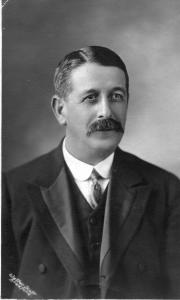
My interest in the history of the Worthing Glasshouse Industry naturally started whilst I was investigating the early history of the firm started by my great-grandfather, Arthur Linfield.1 Arthur was among the wave of pioneers who saw the obvious success of the early glasshouse growers in Worthing, but had the vision to exploit the technology on a much larger commercial scale. He was among several growers who entered the industry in the 1880s, not only to take advantage of the high prices that could be obtained for early produce, but also to exploit the surging demand for tomatoes, which were commanding very lucrative prices at Covent Garden. He built his first large nursery in Ham Road, and after making enough money to pay off his debts and purchase the land, he decided to expand further. Arthur eventually had four nurseries in East Worthing, the main crops being grapes and tomatoes. Mushrooms were also grown from the earliest days, mainly as a catch-crop beneath the grape vines. In 1913, he bought a dilapidated dairy at Thakeham known as Town House Farm to provide work for his younger sons.
Whilst researching the large scale OS maps (25in:1 mile) at Worthing Library, I was amazed at the full extent of glasshouse coverage in the areas in East Worthing and to the west of the town, especially around Durrington and Goring. These glasshouse areas were already quite substantial on the 1898 map, and even more so in 1912 after so many growers continued to expand to maintain their profits against ever increasing local and foreign competition. I began to wonder who was operating these various nurseries, and what had motivated the pioneer growers to start in the first place. Since there has been little research into the history of the Worthing glasshouse industry, I decided that something needed to be done fairly urgently to collect photographs and memories before they are lost forever. My longer term ambition is to write a book on the subject, but the priority for the moment is to collect as much relevant information as I can and to research the archives. All the photos and other material will eventually be deposited in an appropriate local record repository where it can be suitably preserved.
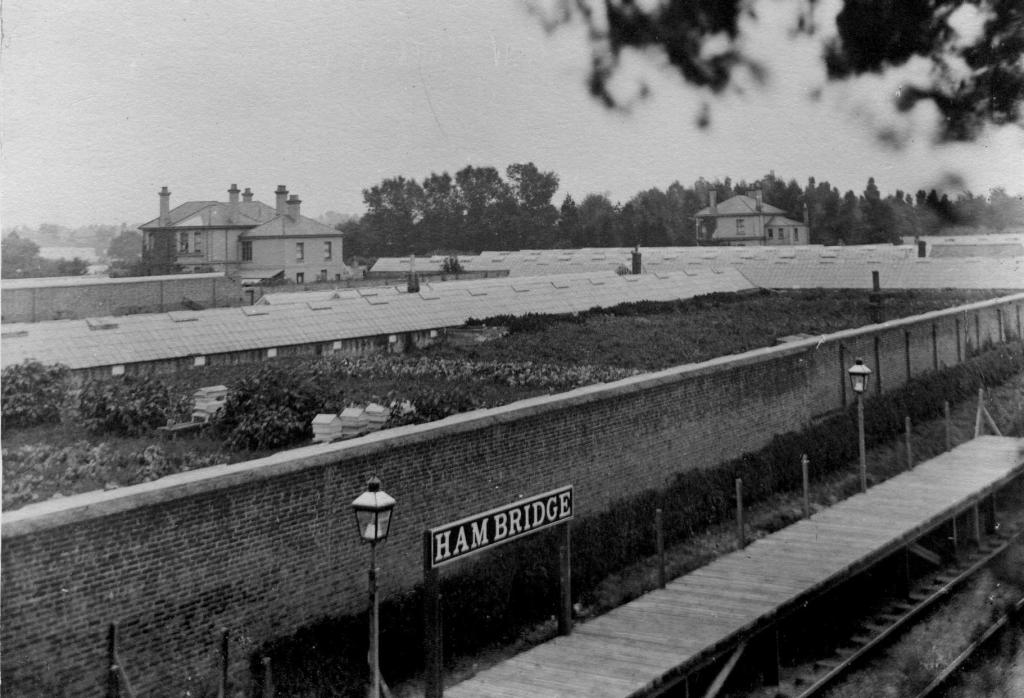
We are particularly keen to acquire old photographs, memories and any family history of the growers. The scale of the task is quite daunting, as there were well over 200 different glasshouse nurseries operating during the heyday of the industry. I can really only hope to build up a picture of a representative sample, the detail of which will depend on the amount of information I am able to collect.
Many of the businesses operating in Worthing were small family concerns, with a small number of greenhouses, perhaps concentrating on grapes and tomatoes with chrysanthemums to fill the houses through the winter. The work was hard and the hours were long, but growing was ‘in the blood’ and the dedication to keep going often had more to do with the job satisfaction and loyalty to the previous generation than to the monetary rewards. By the 1950s/60s, with many growers reaching retirement age, and the increasing encroachment of the expanding town, more and more nurseries closed for redevelopment. When nurseries started to be built on in a particular road, it became more and more difficult for the remaining ones to hold out when the prospect of a more comfortable retirement loomed in front of them, especially after the pressure being exerted by the developers to purchase their land.

These are some of the stories I have come across so far, and I am particularly grateful to all those people who have provided me with the stories of their family businesses: One of the typical small family run nurseries includes Stoner’s Tarana Nursery in Greenland Road, Durrington. Taken over by Harry Stoner in the 1920s, it had 3 or 4 glasshouses where they grew tomatoes, grapes and chrysanthemums. But a serious flood forced it to close in1959. Figure 3 shows the inside of one of the Stoner vineries.
In East Worthing, 3 generations of the Lyon family ran Kempshott Nurseries on the south side of Brougham Road. Started by Andrew Lyon in 1893, it was closed and developed for new houses in 1965. What is very fortunate is that Andrew’s grandson, Andrew W. (Jim) Lyon was a keen amateur photographer who recorded so much of his own nursery and the whole area around Brougham Road – before it was covered with housing estates and factory buildings. Many of his photos were taken from his bedroom window to the north, and show a panoramic view of the nurseries on the other side of the road. In the 1930s, he experimented with colour slides and there are some fascinating colour photos taken in 1938. Figure 4 shows the view towards the South Downs, with Paramatta Vineries in the centre (run by the Burtenshaw family). Sompting Abbotts School, Sompting Church and the South Downs can be seen in the distance. There are many others showing views of different chrysanthemum varieties in the greenhouses.

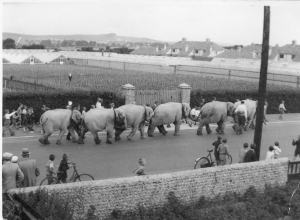
Fig. 5 shows another 1930s view, further to the right of the previous image. A procession of elephants is making its way to the large field on the eastern side of the nursery – for the annual circus and fair, which all the local people looked forward to.
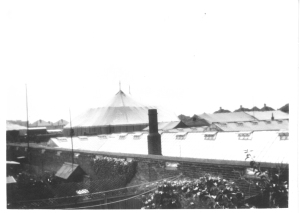
Figure 6 shows Kempshott nurseries from the back of the family home (No. 78, Brougham Road). The annual fair has been set up in the large field to the east of the nursery. The one beneath (Fig. 7) is a view taken when the nursery was dismantled in 1965. Such views are probably quite rare, but they are an important record of the final days of the industry in the town and it would be nice to find more.
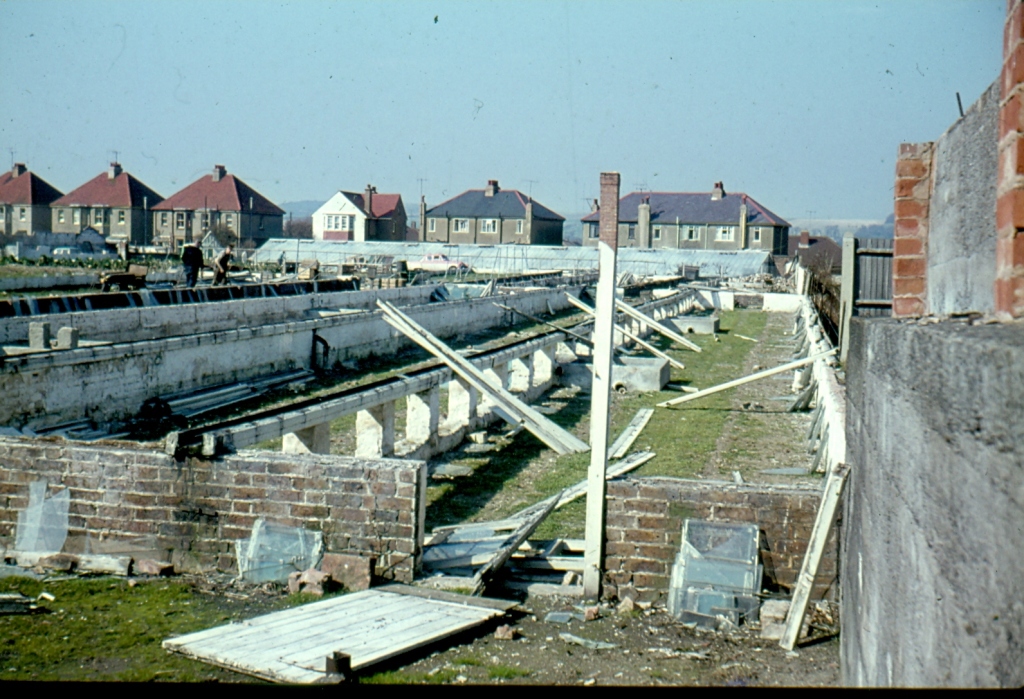
The Magness family have provided some fascinating information about their nurseries in Lansdowne Road, West Worthing and later in Glebe Road, West Tarring. Started by William Magness, who was initially in partnership with Henry Barnwell in Crescent Road, he specialised in early forced strawberries on a large scale which he grew in pots. The pots were placed on shelves, strategically located at different heights along the length of the glasshouses. At one time, William had as many as 40,000 pots of strawberries growing on his nursery at different stages of development. The work was intricate and tough and required a sharp eye to check the plants regularly for pests and diseases, especially aphids and red spider mites. Another arduous task was hand pollination of the flowers using a rabbit’s tail, but hard work and meticulous attention to detail paid dividends when the strawberries were sold at very favourable prices. Even in the early days, William could realise prices as high as £2-2s per lb. at the beginning of the season, but they were expensive to produce. In 1896, the first fruit was picked on January 21 – long before the normal time in mid-March. He would pick regularly from the end of January till the outdoor crop started in June. His most eminent customer was King Edward VII, who had them delivered to him while visiting Ireland. William also had a nursery in Goring Road, but it was sold in the 1920s.

William was eventually joined in the business by three of his sons. When all his sons joined up in the First World War, William was forced to stop growing strawberries, presumably because they were so labour intensive. Nevertheless, before he died in 1925, he made his sons promise that one day they would restore the Magness name as quality strawberry growers. They would not disappoint him in the promise they made; in fact, it would prove a shrewd commercial decision. By 1927 they were back in production, and apart from a few setbacks during the Second World War, they continued to grow them for another 30 years. The attention to detail was meticulous: each strawberry was delicately placed onto a leaf which had been carefully laid in the base of a quality wooden tray or small box (called a square). Royal Sovereign was the favourite Magness variety, good for flavour and size, and it would often only need 12 or 13 berries to fill a 1lb. box. Fig. 8 shows Edgar Magness demonstrating the attention to detail that made the Magness name so well known.
In fact, the brothers received a letter in April 1934 from Poupart of Covent Garden informing them that the King was so pleased with their strawberries at Kempton Park Racecourse “that he gave orders for them to be taken back to Buckingham Palace”. Praise indeed! The brothers moved to Staunton nurseries in West Tarring in 1933, and continued to grow strawberries and other crops until the 1950s.
I have also been in touch with a descendant of James Dutton, who had nurseries in Chesswood Road and on the top corner of Chesswood and Ham Road. James Dutton was born in Aldershot in 1848. He began his gardening career at Aldershot Place, before moving in his early 20`s to Sussex to take up a new position at Buckingham Park in Shoreham. By 1881 James had moved to Broadwater where he worked for Henry Apted who had glasshouses growing grapes, tomatoes and melons, eventually becoming foreman. Sometime between 1881 and 1887 he moved to Ham Road and started his own nursery. He and his wife had eight children and in time his two elder sons worked with him in the nursery.

These are a selection of stories I have been very lucky to ‘discover’ during my research project to date, and they hopefully give a flavour of what I am looking for in my search for archive material and more information. I am particularly keen to find more photographs, which bring everything to life in such a vivid and extraordinary way. The scarcity of photos is quite astonishing, but I feel sure there are dozens more somewhere, hidden in draws or attics. I am interested in material from any of the glasshouse nurseries in the Worthing vicinity, whether big or small. I am also very keen to find out more about the early businesses, established in the 1880s and earlier, many of which became quite substantial, with names such as Apted, Baker, Barnwell, Beer, Bushby, Dutton, Feest, Frampton, Greenyer, Hollis, Linfield, Magness, Page, Piper, Purser, Russell, Sams, Scott, and Sparkes.
I already have some material about many of these enterprises, but surprisingly, nothing from others who were among some of the best known Worthing growers. They include Pipers, in Chesswood and Ladydell Road, the largest glasshouse firm in Worthing, which closed in 1955. If anyone knows any descendants of these families, I would be delighted to hear from them.
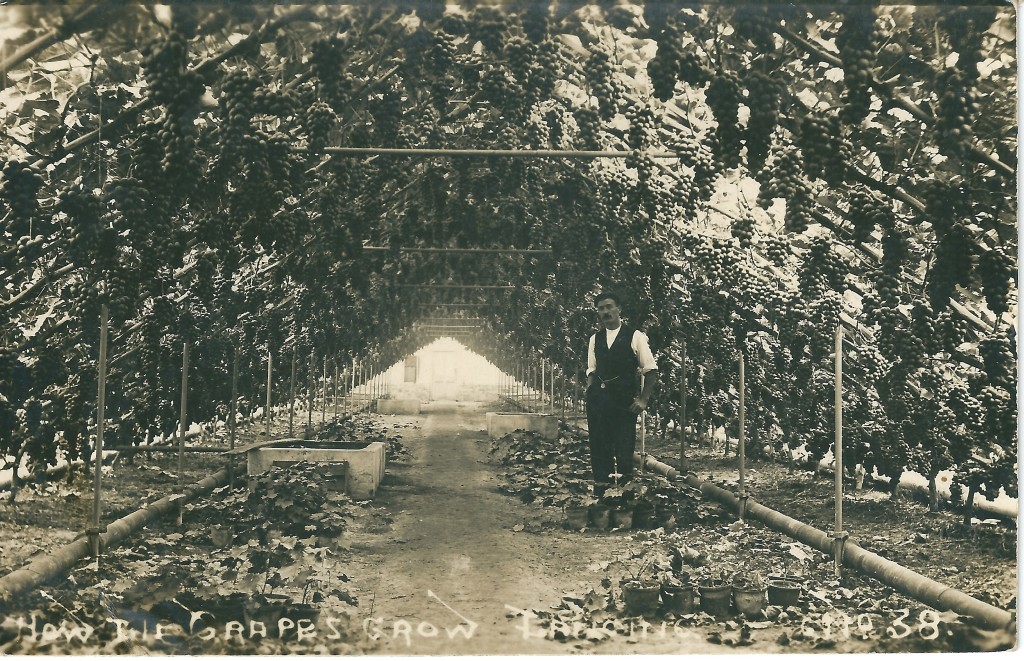
1 A History of the firm of AG Linfield of West Sussex, Fruit Growers, Market Gardeners and Mushroom Producers.Part 1: The Early Years, by Malcolm Linfield in Longshot Vol. 12 No. 2, (April 2008).
With special thanks to the following who provided information about their family enterprises and allowed me to copy and use their photographs: Pat and Tony Gray (Stoner), Rosemary Yates (Lyon), the late Jean Godden (Magness) and Pam Stepney (Dutton).
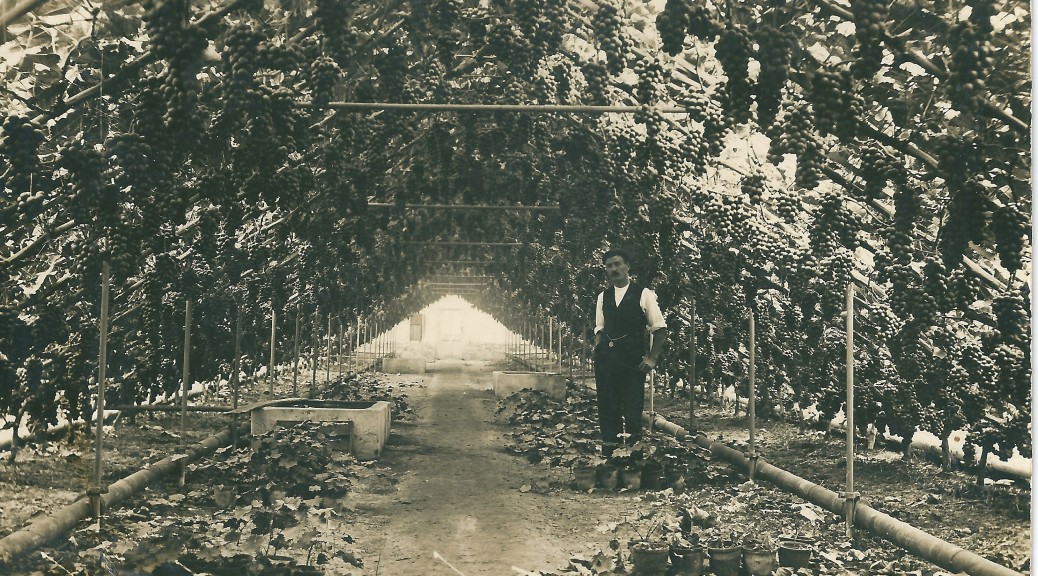
It is long gone now but my family business was Feest & Sons which was a Fruiterers, Greengrocers, Florists, Market gardeners & nurserymen.
The founder was (I think) William Feest (1808 -1902) .
If you wish to know anymore the West Sussex County archives have a long history of the business I sent to them in 2015
Thanks for this, James. I certainly remember corresponding with you a few years ago about your family’s growing enterprises in Worthing. I’m very pleased to hear you have supplied the West Sussex Record Office with details of your family’s business. In time they should have a significant archive on the history of the Worthing Glasshouse Industry, as more material is added to the original archives donated by the West Sussex Growers Association some five years ago. All my own research work will be donated in due course, and there are already some archives relating to the Frampton and Linfield enterprises which can be accessed.
Hi Malcolm, I am the great great grand daughter of James Dutton, I don’t have the best of pictures as they are photocopies of photocopies. My family said they grew grapes for Queen Victoria when she was in residence at Osborne House. We were also reminded never to wash a bunch of grapes to keep the bloom on them. James’ brother John joined the army then deserted from barracks in Canada to fight in the American civil war. He remained in America and had a family there. James died in 1918 either falling off his bicycle, anyway it was some sort of accident.
Hi there,
You mention the name Feest. They are long-distance relations of mine through the Guile side of my family who were also nursery people in Ferring/East Preston. I am keen to learn more about this side of my family.
Best Wishes
Sophie
Hello Sophie
Some years ago I corresponded with Jimmy Feest about the nursery his father ran at the Bartons in Tarring. He also bought Somerset Nursery at one point.
Anyway, I attach a couple of articles I have copied off the internet at some time or other which you may not have seen. Also a few photos – one shows the Feest nursery in Brighton Road which had a shop in the front of the glasshouse facing the road.
I found a newspaper cutting from the Worthing Gazette for October 23 1895 which mentions a Reuben Guile, manager at Frew & Co’s nursery. He conducts the visit around the nursery with the journalist, so it’s very interesting
Anyway, I attach a copy for you. I presume this Reuben is one of your relatives?
with regards
Malcolm
Reply from Sophie:
Yes he is one of us, thank you! I’m also researching him currently and have found him buried at Heene Cemetery in Worthing.
Thank you so much for your other email as well. I can’t remember whether I replied or not (silly me!). It’s all fantastic information so thank you!
Best wishes and stay safe!
Sophie
Hi,
My Great, Great Grandfather was James Dutton. My Great Grandfather Frank is believe it the little BOY on Alice’s lap in the photo.
I’m trying really hard to get hold of Mike and Pam Stepney (Dutton) .. Can anyone help me. My Grandmother has the same photo as on your website.. Bless her she has plenty more!!
Please Help. Great Post!!!
Regards
Hi Thomas
Great to hear from you!
I presume you mean John and Pam Stepney, whom I know fairly well as we are fellow members of the Friends of Broadwater and Worthing Cemetery. Pam gave me copies of a number of photos of the Dutton nurseries some years ago, but I’m intrigued to learn that your grandmother also has some. I would love to see them one day. In the meantime, I will pass on your details to John and Pam whom, I am sure, will be in touch with you shortly.
John and Pam are very active with the Friends’ group, who do a very worthwhile task in maintaining and conserving the graves. There is also a group of Friends who research many of the people buried in the cemetery and write up the results of their discoveries, which are then published in modestly priced A5 booklets. These are available for sale to the public, most of which are sold on tour days. These booklets are therefore themed, and I was involved a few years ago in writing up some of the stories in the ‘Nurserymen, Growers and Market Gardeners’ booklets (there are two), which includes Pam’s article about James Dutton. I have also been involved in leading this particular tour, and it is interesting that several off the pioneer glasshouse growers of Worthing are buried at the cemetery. For the record, issue 1 contains articles about George Beer, James Dutton, Henry Hollis, John Barnett, Albert Baker, William H. Linfield, Edward and George Purser, and William Apted. Issue 2 includes Joseph Frampton, Andrew Lyon, Frederick Bushby, George Russell, John Cheal, the Barnwell family, Henry Baker, Robert Piper and George Simmonds. The website address from the FBWC is: http://www.fbwc.co.uk
Does anyone have any information concerning the Bowers tomato and chrysanthemum glasshouse nursery in Durrington Lane? Owned by George Bowers and his wife Vi.
Hi Malcolm,
I have a few ideas which may or may not aid your research but would prefer to correspond by email rather than posting on your web page, if that’s ok.
If you could get in touch, I’ll drop you a line.
Many thanks
Kind regards
Ruth
Working on a HIstory of Allotments in Worthing and referred to your history as a source. You are probably aware of the name Piper appearing on a lease for Poor Ten Acres but in case you are not, there was an allotment site marked on OS map LXIV.15 revised 1909, published 1912 – north of Lyndhurst Rd and across what is now Chester Avenue, next to a large field called ‘Poors Ten Acre’ . In 1891 the Sanitary Committee recorded that WBC had acquired “about 4 acres” for allotments, at £6 per acre, from Mr Goddard, leasee of Poor Ten Acres. Applicants were to be asked if they were interested at 1s per rod. 1901 Mr Piper has a new lease for PTA at £55 per annum and he is “willing to let to the council … the present allotment grounds now held by the council, on an annual tenancy” at £8 an acre. The arrangement for expiry at Christmas is later amended to Michaelmas.
5th June 1903 Lyndhurst Rd and Ham Rd are to be widened so some tenants will be given notice. WBC bought the land in 1919 .The land, estimated as 9 acres in 1836 and let for £55 in 1903, was sold in 1919 to Worthing corporation for £4,000.” Ten acres is now a street name, where the first council houses were built.
Does anyone have any info on Martin and Frank Fuller – they were brothers and owned a market garden nursery in Lancing in the early 1900s.
Many thanks
(Brief summary of correspondence)
Dear Helen
The various family relationships among the Fuller family of Lancing are fairly complicated as there were 5 brothers who were all children of Martin Stubbs Fuller, who started the market gardening business in the 1870s or thereabouts.
If I were to hazard a guess, I would say that your grandmother was probably Violet Delphine Fuller, daughter of Frank and Bessie (Bushby) who married Harold Dove in 1956 (probably completely wrong!!) Frank, of course, owned Rosecroft Nurseries in Sompting Road until it closed in the 1950s.
I have seen several interesting photos in some of the local Lancing photo collections showing various members of the Fuller family, one of which depicts the marriage of Frank to Bessie Bushby in 1912. I also have a couple myself – you no doubt saw the one inside a Fuller’s vinery in my article. This was from an old postcard (c1910) and shows, I believe, Martin George Fuller.
Reply from Helen:
Thanks for your email, yes you’re wrong, but not completely. Violet was my great aunt, she was my grandmother Eileen Vali Fuller’s sister, she was a couple of years younger than my nan. My nan Eileen was born 1914 and married George Edward Earthey in 1937/8.
Frank was their father, Bessie Bushby was their mother and Martin was their uncle.
Rosecroft was where my nan and grandad lived when they were first married and that was where my dad and uncles were born. I have a picture of Rosecroft, but sadly nothing else.
Hi Helen
Here is some information about the pictures in the Lancing books I was telling you about. One shows Violet Cottage where Martin Stubbs Fuller and his wife starting living after their marriage in 1870 – he rented nearly 15 acres of the fields to the south and north of his house (on the corner of South Street and Elm Grove), including one field to the north of the railway line. It was on this land that he established extensive orchards and market gardens. I attach a sketch map of his holding from about 1914.
The other photos include the marriage of Frank and Bessie in 1912 which was a joint wedding with her sister Dolly. Lovely photo of Martin Stubbs senior, seated far left. Frank is next to him with Bessie. The Bushby’s were another prominent family of market gardeners in the local area.
Another photo shows many of the family picking from fruit trees in one of their orchards. It reputedly shows Martin Fuller on top of the ladder; Sidney is standing halfway up the other ladder; left to right at the bottom are Edwin Fuller, Hector Boyd, Tom Boyd, Frank Fuller and Martin Fuller senior. Whether all these names are actually right, I couldn’t really say.
I know little about Rosecroft Nurseries so would be interested in anything you may know about it. The 1939 register shows Frank and Bessie living there at the time.
I have attached a piece I have put together for you about the Fuller nurseries in Lancing. I have enjoyed the hunt for information and hope you will find it all of interest.
I would like a copy of your photo of Rosecroft, if possible, and any further information you or your father and uncles may be able to add. I would like to include the Fullers in my book so anything you can add would be really useful!
My Great Grandad Mariner William Mariner worked for the Lindfields in the greenhouses, My Granny Christina Mariner worked in service for the family we have photos of sons in uniform and another family member Mr Redman and few other photos will share I think . We are related to the Angmering Lindfields.
Dear Alison
Thank you for contacting our website. I am very interested in your family connection and would love to have some details of the time they worked on the nurseries and in service for the family. I would also love to see the photos you have.
It is also very interesting to know of your family connection with the Angmering Linfields and, as a family history group, we would really like you to provide us with as much as you know about them. We will have many of them in our database so can also provide you with the information we have of our own records.
Thanks for getting in touch and I look forward to hearing from you.
Alison replied:
Hi Malcolm,
Thanks for the reply – here are two photos. One of them shows my Great Grandad William Mariner with whom I don’t know. Please tell me, and the other shows three Linfield brothers, with whom my Granny was in service with. I would like to know who they are, and will send other photos soon.
I found a connection through a marriage my 2x great grandad sister Emily Short, born in 1862, who married Thomas Davidson. He was the son of George Davidson and Ann Linfield (daughter of William and Elizabeth Izard).
I have the family tree on Ancestry, I can send a link so you can access the tree
Hope this helps
Best wishes
Alison Grace (nee Short)
Malcolm replied:
This is great stuff! The photo shows Harry Linfield, my grandfather’s first cousin, with your great-grandfather William Mariner. The military photo (of which I have a copy) shows Harry in the middle and his two brothers, William Howard Linfield on the left and Arthur Frederick Linfield on the right.
Their father, William Henry Linfield (1854-1923) was the older brother of my great-grandfather, Arthur George Linfield who started the glasshouse business in East Worthing in 1882. William was Relieving Officer for the Worthing UD. as well as Registrar of Births and Deaths for many years. But he also had a small nursery with glasshouses built around his house in Lyndhurst Road, which must have been something of a side-line. He had one glasshouse which was 200ft in length. This was obviously not the same business as the one which my great-grandfather started.
I have researched this family in some detail and there is an article about them on this website (‘The Linfields of Lyndhurst Road, Worthing’) which you might like to see. You will read in the article how during the Great War, Harry was buried in the trenches for a several days after a bomb exploded, before eventually being rescued – however, it affected him for the rest of his life and he suffered badly from shell shock. He had a very sad life in the end.
That is a lovely photo of Harry with William Mariner and I am very pleased to have it. Thank you very much. I hope you enjoy the article and I look forward to hearing from you again soon, hopefully with some more details.
Best wishes
Malcolm
Hi Malcolm
My grandfather, Edwin Best, owned Lenhurst Nursery on Terringes Avenue. At one time I used to live in one of the houses that were on the site of the nursery, it was at one time recorded on OS maps as Midanbury.
Unfortunately I cannot find any photographs that I could contribute to the collection.
Hi Trevor
Many thanks for getting in touch about your grandfather, with the name of his nursery in Terringes Avenue.
I assume he was born Albert Edwin Best, son of George Harold Best and his wife Irene Daisy as I have come across the family in the 1911 census when they were living in Brougham Road. Edwin was only 4 months old and his brother George Harold (jun.) was 2. Interestingly, his father was then working as a fruit grower, presumably at one of the many nurseries in this area of East Worthing.
I would be most grateful for any information you may have about your grandfather and his nursery. Do you know what he grew and when he was at the nursery? Did he sell up in the 1960s when many of the nurseries in Durrington were demolished to make way for housing? Did he work with his brother?
Anyway, I attach a questionnaire which I hope you may be able to add further information to.
My father Bill Firman owned Maple Nursery on the Littlehampton Road. I believe it was formerly Raglans Nursery (?) I believe he bought the nursery in the 50’s . Would love to find some photographs/maps. I remember him pulling down all the old greenhouses and erecting aluminium ones practically by himself.
Funnily enough, I do know something about Raglan nurseries, especially as there is a family link with the founder of the nursery, Robert Moore Cave who established it on 2 acres of land in about 1900. Situated on the north side of Littlehampton Road, slightly to the east of the junction with Durrington Lane, it was immediately to the west and north of Thomas Blisset’s nursery with a large exit to the main road. Initially a partnership (Cave and Mead), I have always wondered why the business was called Raglan Nurseries, but by 1912 there were 7 glasshouses with a total foot run of 900 feet (Field Book IR58/94205 Ref. no. 7792). In fact, there were four nurseries established in this same area before the First World War.
Robert Cave was born in Weston-super-mere in 1873, and in 1907 he married into the Linfield family, who also had nurseries in East Worthing. His wife, Ethel Kate, known as ‘Sis’, was a daughter of William Henry Linfield, relieving officer at Worthing in the service of the East Preston Guardians. He was also Registrar of Births and Deaths, and up until her marriage to Robert, Ethel was her father’s assistant at Ashdown Road, being deputy Registrar of Births and Deaths. Although he had a full-time job, William also owned a small nursery attached to his house in Lyndhurst Road, where he grew grapes and tomatoes in the glasshouses. Ethel’s uncle was Arthur George Linfield, one of the larger Worthing growers, with nurseries in Chesswood Road, Ham Road, Ladydell Road and on the seafront in Brighton Road. Robert sadly died suddenly from a heart attack in 1935 whilst walking on the Downs; he was only 62, but had apparently retired from the nursery a number of years earlier. Unfortunately, I don’t know who had the nursery immediately after him; his widow outlived him by a further 40 years!
Around 1910, Robert built a bungalow on the site for himself and his wife. From later maps, it would appear that Raglan nurseries was substantially larger, having incorporated a neighbouring nursery which in 1913 was owned by Fredrick Murrell Burt and known as ‘The Vineries’. At that date, Burt had 15 glasshouses amounting to 2060 ft in length on 3 acres of land.
I have tried to follow up the history of Raglan nurseries from some of the old papers, but haven’t been able to find out a lot. I don’t know when the two nurseries merged, but at some point it became a limited company. In 1950, an order was for the compulsory winding up of the company, on a petition by the National Provincial Bank. The company had an overdraft of approximately £9,500.
In April 1951, Raglan Nurseries was put up at public auction. This notice in the local paper gives some useful particulars about the assets: 31 ‘first-class’ heated greenhouses with a total area of 1.25 acres; 1 cold store, packing sheds, stores, offices, 7 mushroom houses (bedding area 24,000 sq.ft.), the detached residence known as ‘The Limes’, and a pair of modern brick bungalows. The whole area extended to 7.25 acres. Apparently, it failed to reach the reserve price and the property was withdrawn from the auction.
The only photo I have I found is on Bygone Worthing FB site, and it shows one of the modern bungalows near the road, probably taken in the early 50s – can glimpse one of the glasshouses on the side. Looking at the Worthing papers on the BNA website, they unfortunately don’t go beyond 1958 at the moment. I’ve found your father’s name a few times, mostly connected with his golfing prowess at Hill Barn Golf Club where I believe he was captain! Maple Nurser is mentioned a few times during the fifties (from about 1954) but so is Raglan nurseries (eg the straw roof of one of their mushroom houses caught fire! That was in 1957). This is confusing, but I wonder whether your father may have bought part of the old Raglan nurseries (which he re-named Maple Nursery) whilst someone else bought the other part (and kept the old name). Could this be right?
Hello
I live in Lansdowne Road and have a bothy at the bottom of my garden. I am about to embark on some renovation and am interested in finding out more about the buildings use , history and how it was used to heat the glass houses.
This sounds very interesting, Lorraine and if it is indeed what you say (I have also seen your query on FB) – a surviving stokehold connected to a nursery – it is probably the only one left! I’m very pleased you are considering preserving it rather than destroying it, which would be such a shame. I attach a photo of a covered stokehold at another Worthing nursery.
I would love to come and see it sometime, but obviously not at the present moment. I attach a photo of a typical stokehold at a Worthing nursery. They usually had a horizontal tubular boiler (made by Thames Bank or Rochfords) which was below ground because it was gravity fed. They were developed in the 19th century and, in many cases, survived right up to the 1950s on many of the smaller nurseries. They weren’t always terribly efficient and it was really hard work feeding them with coal, usually requiring topping up at night time as well.
Is there an old boiler still there, and if so, can you see the name of the manufacturer?
I can give you further details on how they worked. This sounds as though it may be a very precious survival of a piece of Worthing’s glasshouse history – and there is extremely little left now!
I think the first thing will be to determine the exact location of the structure on one of the old OS maps, which will enable us to identify the glasshouse nursery on which it was built. Lansdowne Road once contained many nurseries, on both sides, especially before the First World War – this can be verified by looking at the OS maps for 1912. It was during the inter-war years that most of them disappeared under housing developments.
Thanks for getting in touch
Best regards
Malcolm
Hi
I have a 1912 postcard sent to Miss C James, Frampton Nurseries, Meadow Road, Worthing E, Sussex. I think she was Clara Bessie James and her father Charles Thomas James worked at Framptons. They lived in Archibald Road.
Thank you for this information, John. I had a quick look at the 1911 census and found the family living in Archibald Road, as you say. There is no indication that either Clara or her father were involved in nursery work as Charles’ occupation is given as ‘Motor Bus Washer’ and Clara as ‘dressmaker’s apprentice’. The postcard from 1912 would indicate that Clara may have found some employment at Frampton’s nurseries in Meadow Road. Do you have any other information which shows that her father was also working there by 1912?
My grandfather was Thomas Burtenshaw. We owned a large greenhouse nursery in Worthing. My mother took great pride in them and shared many stories. I have not found any information online. I am wondering if you have heard of him.
Thank you
Robin
Hello Robin
Thanks for getting in touch.
The Burtenshaw family had Paramatta Vineries in Brougham Road in Worthing. I presume this must be the family you are referring to? Started by Walter Henry Burtenshaw around 1912, it carried on under his sons Harry Thomas and Edward (Ted). I presumes ‘Harry Thomas’ is the Thomas Burtenshaw you are referring to, your grandfather?
I attach an extract of the 1932 OS 25in map showing you the location of Paramatta Vineries in Brougham Road. Also a couple of colour slides taken in 1938 by a person who lived at the house coloured in yellow on the map (Jim Lyon was interested in photography and took a lot of scenic views from his bedroom window). The Lyon family were fellow growers and owned Kempshott nurseries.
I will put together a short piece for you about everything I know about the Burtenshaws, taken from whatever sources I can find (newspapers, ancestry etc).
If you and your brother are able to add more (including any photos) that would be great! The more information I can get, the better. As you know, I am writing a book about the history of the Worthing Glasshouse Industry and the Burtenshaws obviously need to be included, so if you have any stories or useful information I can use, it will make it a lot more informative and interesting.
With best regards
Malcolm
hello Malcolm
I wonder if you have any info on Wallace Nurseries. I believe they were just north of Pevensey Road. I’m one of the researchers at Heene Cemetery and am looking into the life of William Frederick Young who is buried there. He owned the nursery from about 1901 until his death in 1919 and I believe Arthur Linfield married his sister Edith. There seems to be a dearth of photos of this area around the beginning of the last century and I wonder if you have seen any. Grateful for any help.
I have a catalogue of greenyers’ from 1960 if of interest
Thank you, Jem
All contributions gratefully received! As you know from reading my article, I am collecting photos and whatever archive material I can find about the Worthing Glasshouse Industry,the objective being to eventually pass it all to the West Sussex Record Office.
With best regards
Malcolm
Malcolm very interested in your ongoing and excellent crowd resourced research!
i am interested in makers/manufacturers of post war prefab concrete glasshouses,
including this missing item from the RHS library: All British Concrete Glasshouses (Worthing) Ltd – do you know this and can you help with any leads please?
many thanks Annabel
Dear Annabel
Thank you for your message
I have come across concrete greenhouses before, though unfortunately, I can’t find any notes I may have made at the time. It is unfortunate that the leaflet you mention has somehow disappeared from the RHS Library.
I recently contacted a friend about the subject, but he, too, cannot really give you any more information. He wrote:
‘I know the type of concrete glasshouse you are talking about and thought I might have a photo but I cannot find it. I think there used to be one on a holding on the LSA at Sidlesham but so much of the old glass has gone in favour of horses I doubt it is still there, even if I could remember where to look. I am sorry, I didn’t know who offered them for sale or where they were made. I think you will be very lucky if you do manage to find out more about them’.
I am sorry to disappoint you, but will keep looking and if I discover anything, I will be in touch.
Best regards
Malcolm
This is all fascinating. We’ve just bought and moved in to the original Shevada Nursery on Durrington Lane and found some very interesting things in the loft. Would love to know more about this house and the people who lived here. Renovating it is hard hard work but we’re bringing it back to life slowly. Any photos or information anyone has would be great to see.
Hi, my father worked for Framptons nurseries for a few years. I have a couple of newsletters from 1964 and 65 if you would like?
Hello malcom please forgive me if I am way out and wrong. My grandmother was cissy elizabeth linfield who married john theodore Martin jipps and lived in lancing. My mother used to say she came from the agricultural growers of linfields. unfortunately i do not know the family history for real, only what i think i have discovered on ancestry. My grandmother’s parents were henry linfield and mary Cooper and had my grandmother and three boys maye Leonard. Eric without looking i cannot remember the other son. And they lived at 1 chippers Castle cottage tarring.
Please could you help me verify that I am looking for the correct linfield line.
If I am correct I do have quite a a good line. From Henry’s parents in Thakeham.
With grateful thanks
Tricia
Tricia, You are indeed connected and I have replied directly to you by email with some details. Cheers, Alan